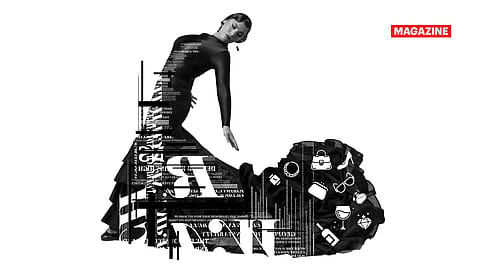Christian Blanckaert on Why Brands Need to Localise their Offerings
Creativity and innovation must remain central to brand strategies.

This story belongs to the Fortune India Magazine global-brands-indian-sheen issue.
AFTER YEARS OF robust growth and a remarkable post-Covid rebound, the global luxury market is entering a period of marked slowdown. Forecasts for 2025-2026 suggest a modest growth rate of just 1–2% globally — a sharp deceleration that will challenge luxury brands to confront a new, more restrained reality. This subdued pace is forcing even the most established names in the industry to reconsider their operating models, governance structures, and overall strategic direction.
For too long, many luxury brands enjoyed a sense of calm — some might even say complacency — buoyed by consistent demand and strong margins. But that tranquillity is proving incompatible with today’s shifting global landscape. Brands that had forgotten the need for caution are now facing harsh realities. Warning signs are emerging from iconic names across Italy, France, the U.S., and the U.K., with several reporting troubling performance figures for 2025.
A sobering lesson in humility lies ahead, one that will prompt painful but necessary decisions. Cost-cutting measures are inevitable as brands strive to return to profitability. We’re beginning to see bold structural changes emerge — particularly in sectors like champagne and cognac — and this is likely only the beginning.
Over the past few years, luxury pricing has soared. Between 2019 and 2024, Chanel raised the price of its Classic Flap Bag by over 75%, yet sales held firm. But in many markets, price hikes have outpaced perceived value, sparking brand fatigue and threatening the price-to-value equation. Have French and Italian brands reached a ceiling in mature luxury markets? Can they continue to command high prices while maintaining desirability? There’s a growing risk that even wealthy consumers may begin to balk, while potential customers are priced out entirely.
Geopolitical instability is compounding these challenges. The U.S.-China tensions, erratic American politics, volatile tariffs, uncertainties in China, the Taiwan situation, and escalating crises in the Middle East are creating significant headwinds — particularly in the key U.S. and Chinese markets.
Japan remains a bright spot. A weakened yen continues to attract Chinese tourists, while Japanese consumers remain loyal to the heritage, craftsmanship, and cultural resonance of French and Italian luxury.
Europe is relatively stable, albeit saturated. Demand remains high among international tourists, especially in France and Italy.
More Stories from this Issue
India, however, continues to challenge Western luxury brands when it comes to fashion. Despite its economic growth and increasing number of affluent consumers, Indian buyers largely prefer their own luxury traditions — jewellery, textiles, and ceremonial attire rooted in centuries of craftsmanship and cultural significance. Western fashion brands struggle to align with deeply entrenched values, where luxury is about heritage, and artistry — not logos or European status symbols. Accessories such as bags, shoes, etc., are of course exceptions to this. So are fragrances.
Add to this high import duties and taxes, and it’s no surprise that many Indians opt to shop abroad — in Singapore, Dubai, Paris, London, Milan, or New York. While retail infrastructure is improving, with malls like DLF Emporio and Jio World Plaza, there are still few luxury outlets. Most major French brands have only two or three stores in India, compared to 20–60 in Japan. To succeed, brands will need to localise their offerings and expand retail presence thoughtfully.
Digital innovation will remain a powerful tool for deepening customer engagement. Creativity and innovation must remain central to brand strategies. Luxury, throughout history, has shown an ability to evolve, adapt, and surprise.
We are entering a new chapter. One filled with uncertainty, but also immense opportunity — for those brands bold and agile enough to seize it.
(The author is also consultant, and professor of management at Essec and co-author of ‘The Road To Luxury: The New Frontiers In Luxury Brand Management’. Views are personal.)